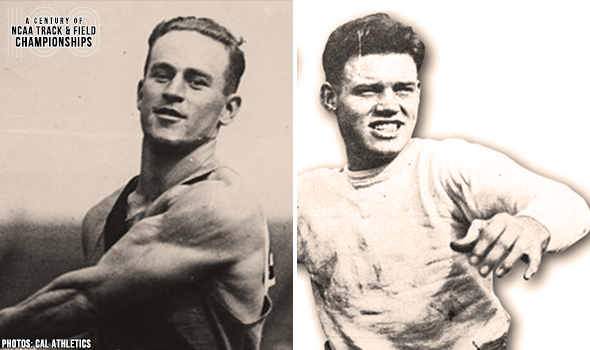
Merchant, Muller Led Cal’s Field Day In 1922
Cal had a literal field day in 1922.
As great as the inaugural NCAA Outdoor Track & Field Championships were in 1921, the second event was bigger — and arguably, even better.
The 1922 edition had something the 1921 version didn’t – the California Golden Bears, hot off a second-straight win at the powerful IC4A Championships (Cal was the first non-East Coast program to win the meet in 1921).
The Bears scored all but three of their then-record 281⁄18 points in all seven field events (The triple jump was not yet on the program and would only be held five times between 1932 and 1956, before becoming an annual event in 1959). They were led by a pair of three-event scorers – both in combinations that displayed exceptional and unusual athletic ability.
Jack Merchant – a 1920 Olympian in the long jump – won NCAA titles in the shot and hammer, the latter being the event in which he would compete at the 1924 Olympics. He added points in the long jump, placing fourth when all field events were contested on the same day.
Merchant, who was a graduate of the same Marshfield High School in Coos Bay, Oregon (formerly known as Marshfield, Oregon) as eventual distance legend Steve Prefontaine, scored a team-high 11 points at the 1922 NCAA meet. To wit, scoring was on a 5-3-2-1-½ system back then; Merchant’s performance would be worth 25 points on the current scoring system, a meet total that wouldn’t be surpassed until Jesse Owens racked up 40 in back-to-back years in 1935 and 1936.
Cal’s other point-scoring machine was Harold “Brick” Muller (He was commonly called “Brick” because of the red color of his hair). Born near the Oregon border in Dunsmuir, California, Muller grew up in San Diego and went to Cal as a football player (He was MVP for the Bears’ “Wonder Team” in their 28-0 win over Ohio State in the 1921 Rose Bowl).
Muller was as versatile as Merchant in track & field — and actually more accomplished internationally, earning the silver medal at the 1920 Olympics in the high jump. In the 1922 NCAA meet, Muller’s best finish was in the long jump where he took second over Merchant’s aforementioned fourth. Muller also added points in the high jump (third) and discus (fourth).
After playing and coaching football – notably at the same time for the Los Angeles Buccaneers in their only season in the NFL in 1926 – Muller would also go to a second Olympics, but not until 1956 as head team physician.
Cal nearly won that 1922 NCAA meet just with Merchant and Muller. After all, runner-up Penn State’s 19½ points were the only total higher than the 17 combined points from the Bear duo. Cal also had five more scorers in the meet to turn away the Nittany Lions: Allen Norris tied for first in the pole vault; Harry McDonald finished second in the 440 as the team’s only scorer on the track; Jack Witter took third in the shot; Sandy Sorrenti was third in the javelin; Ted Treyer ended up in a nine-way tie for fifth in the high jump, which helps explain the fractions.
The NCAA and collegiate track & field will mark a momentous milestone in the spring of 2021 -- the 100th anniversary of the NCAA Championships and with that, the NCAA Track & Field Championships. In June 1921, the University of Chicago hosted the first track & field championships in NCAA history.
This point can’t be emphasized enough: Not only was the event the first for NCAA track & field, but the first championships for any sport under the sponsorship of the NCAA.
To celebrate, over each of the next 365 days, the U.S. Track & Field and Cross Country Coaches Association (USTFCCCA) will celebrate moments, student-athletes, and coaches that have made a century’s worth of championships special. From humble beginnings to important historical milestones to the modern-day, collegiate track & field has evolved with the American society.
The 2021 edition of the NCAA Division I Outdoor Track & Field Championships begin with preliminary round action on May 27-29 in Jacksonville, Fla., and College Station, Texas. The championships final site and culmination of the celebration is slated for June 9-12, 2021 at the newly rebuilt Hayward Field in Eugene, Ore.
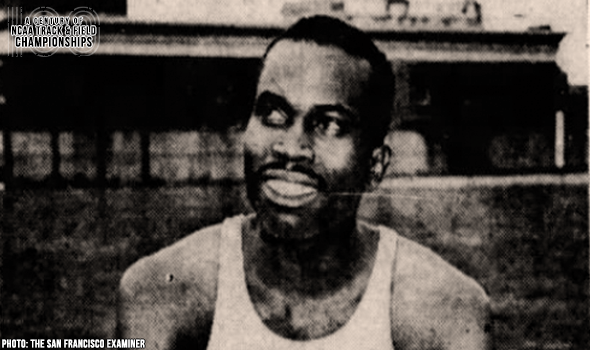
Rhoden Keeps Historic Company
George Rhoden is 1 of just 2 men in NCAA DI history to win 3 consecutive 400/440 titles at the Outdoor Championships. He did so from 1950 to 1952 & added 1951 220 for a double.
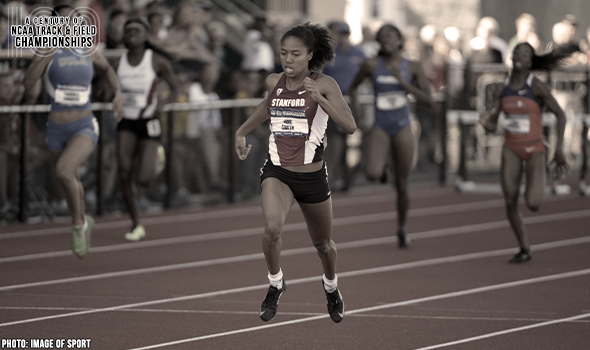
“Kori Monster” Crushed 400H CR In 2013
Kori Carter set a collegiate record in the 400 Hurdles of 53.21 at the 2013 NCAA Division I Outdoor Track & Field Championships. She won that title & took runner-up honors in the 100H.

“Moon” Rose To Occasion In High Jump
Irv “Moon” Mondschein won back-to-back high jump titles at the NCAA Outdoor Track & Field Championships in 1947 and 1948. He also finished as the national runner-up in 1949.
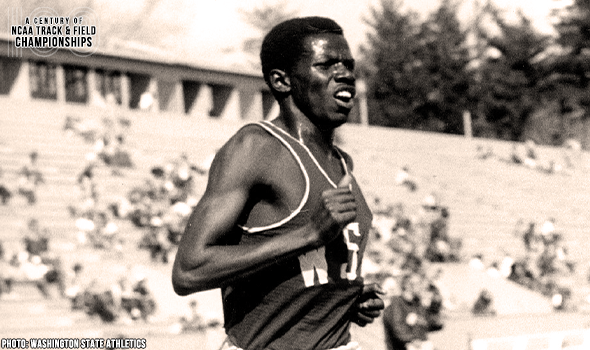
Confident Ngeno Dominated Distances
John Ngeno won four career titles at the NCAA Division I Outdoor T&F Championships, which included three in the 6M/10K & one in the 3M/5K.
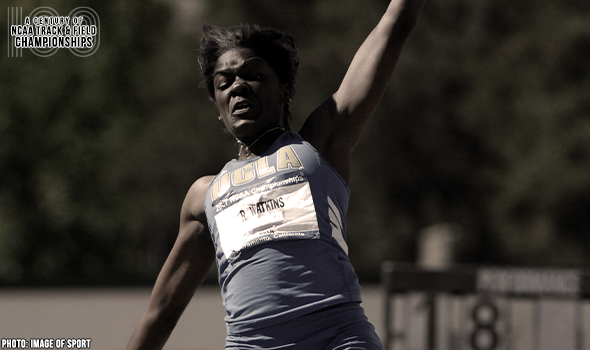
Watkins Flew To All-Conditions Meet Best
Rhonda Watkins set an all-conditions meet record in the long jump of 6.96mw (22-10) at the 2007 NCAA Division I Outdoor Track & Field Championships.
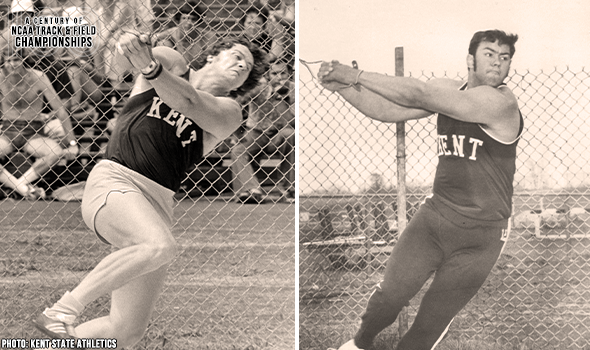
Kent State Hammered Out 1970s Throwing Titles
Kent State athletes won three hammer throw titles at the NCAA Division I Outdoor Track & Field Championships between 1971 & 1973!

Simply Divine: Oduduru Sprinted To History
Divine Oduduru of Texas Tech swept the 100 & 200 at the 2019 NCAA Division I Outdoor Track & Field Championships and set a meet record in the latter.

Rice’s Cavanaugh Ruled The NCAA Shot
Regina Cavanaugh was the first woman in NCAA DI history to win three career shot put titles at the NCAA Outdoor Track & Field Championships. She did so consecutively from 1985 to 1987.

Brown Soared To HJ Meet Records
Reynaldo Brown won two career high jump titles at the NCAA Division I Outdoor T&F Championships, which included a pair of meet records (He topped 2.23m (7-4) in 1973).

Fight On, Sim! Iness Set World Record In 1953
Sim Iness set a world record in the discus of 190-0⅞ (57.93m) at the 1953 NCAA Outdoor Track & Field Championships and won by more than 16 feet.

